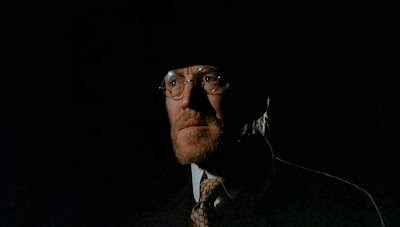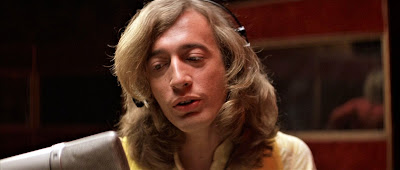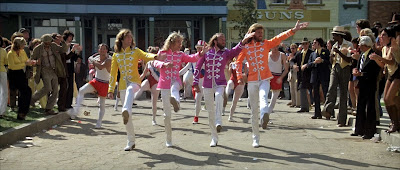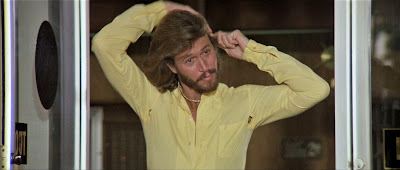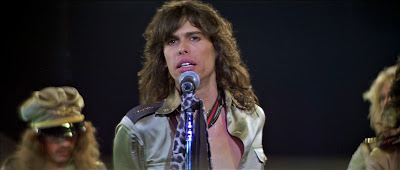Price of Admission is Your Mind
I
read Hermann Hesse’s Steppenwolf when I was 15-years-old. The
year was 1972 and my family had moved across the Bay Bridge from San Francisco
to Berkeley; a college town still so enmeshed in hippie-era philosophical
exploration and the quest for spiritual enlightenment that Steppenwolf and
Hesse’s Siddhartha were practically required-by-law reading in
order to cross the border. Self-reflection of the sort encouraged by these
novels was a big part of the appropriately-labeled “Me Decade,” novelist Tom Wolfe's
name for the era of mass navel-gazing and spiritual introspection that coincided with my
adolescence.
For
emotionally untethered teens such as I, adrift in a sea of inner conflicts and uncertain
certainties (when our limited experience of the world tricks us into believing the truth of our feelings is truth itself), J.D. Salinger’s Catcher in
the Rye was held up as the go-to
novel of adolescent angst. Several of my classmates found something they
could connect with in Holden Caulfield’s privileged-class bellyaching, but I came
away with a strong dislike for the novel, finding nothing in it remotely
relatable to me or my experience.
As
was my custom in those days, I went to the local library to check out books I knew were adapted into films I was too young to see. In 1972 Siddhartha was made into a film
whose provocative poster, R-rating, and arthouse cachet had captured my
imagination. So, not knowing anything of the novel beforehand, I read the book and found
the exotic chronicle of the trials and travails of its spiritually-disenchanted
hero, if not exactly relatable, most certainly flattering to my Catholic School
image of myself. My unexpected enthusiasm for Siddhartha led me to
read Steppenwolf not long thereafter. And what a mind-blower that one turned out to be! At age 15, I won’t say
I actually saw myself AS Harry Haller, the misanthropic
and melancholy 49-year-old man/wolf protagonist of Hesse’s Jungian rumination
on the dual nature of man...but I will say that I most certainly saw a great
deal of myself IN Harry Haller.
 |
| Max von Sydow as Harry Haller |
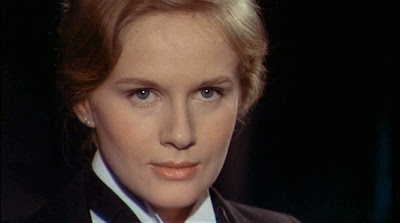 |
| Dominique Sanda as Hermine |
 |
| Pierre Clementi as Pablo |
 |
| Carla Romanelli as Maria |
Set in Basel, Switzerland in the 1920s, German author Harry Haller is
the self-proclaimed Steppenwolf of the title. A bourgeois
intellectual and pacifist suffering from gout, loneliness, and a lingering
post-war malaise occasioning both his physical abandonment of his nationalist
homeland and his spiritual dissociation from mankind. He is, both inside and
out, a stranger in a strange land. A divorcé, Harry reads a great deal, drinks to excess, treats his pain
with morphine, and spends entirely too much time living in his head. His soul longs for the peace and tranquility of self-realization--things he’s long-believed attainable by living the life of an intellectual ascetic--but due to an indistinct restiveness
within, his searching only makes his isolation and self-estrangement more keenly felt.
This is in part due to Harry’s fault-finding dissatisfaction with the world around him. For he is a man who holds the achievements of the dead in
high regard—the lofty spirituality in the compositions of Mozart, the idealist
principles in the literature of Goethe—while
disparaging the modern, jazz-age distractions of the day (automobiles,
gramophones, dancing) as idle and worthless as those who pursue them.
The other side of Harry's discontent is rooted in his lifelong belief
that he is preternaturally a subhuman creature separate and apart from others. A
creature of contrasting dual personality…neither wholly a man nor fully a beast…that
exists as a primitive animal masked by the thin veneer of a cultured human.
Harry’s conformist side—nurtured and validated by bourgeois society—is
ever at war with his wild, rebellious side, a side that has been vigorously suppressed
since childhood. All would be fine if Harry were content to walk the centrist tightrope
preferred by his peers, but in finding himself emotionally drawn to the hedonist and intellectually drawn to the spiritualist; Harry is, within his soul, unable to make peace with his conflicting sybarite compulsions and pious sensibilities.
 |
| Tractate on The Steppenwolf Czechoslovakian artist Jaroslav Bradac contributed surreal cutout art and animation reminiscent of Terry Gilliam (Monty Python) |
In much the same way that the depressed spirit longs for the release of sleep, Harry’s beleaguered soul has come to idealize the possibility of suicide. Unfortunately, the notion of irrevocable escape by his own hand (in his 50th year, via “an accident while shaving”) only makes the pain of life easier to accept, not easier to endure.
Beset by dark, brooding feelings of dread, Harry aimlessly roams the desolate streets, seeking occasional solace on the stairs of neighbors’ homes—like an animal too wild to be allowed indoors, too domesticated to survive on its own in the wilds. In this middle world he sits, comforted by the clean steps, polished doors, perfumed window boxes, and warmth emanating from behind the closed doors; resigned to remaining alone and apart from the interactions of humans…a wolf residing on the steps...a Steppenwolf.
When it appears as though Harry has reached the point of seeing or feeling little else other than the
pain of his own existence, spiritual deliverance materializes in the form of an
enigmatic courtesan named Hermine. Hermine introduces him first to a razor (“You don’t have to use it, you know”); then an antithetical option to his thirst for rebellion (“Obedience is like sex: nothing like it if you’ve been without it too
long”); culminating with a mocking castigation of his presumptuous world-weariness
(“You’ve
got a lot of nerve saying you’ve tasted life to the bottom and found nothing in
it. You haven’t even found the easy, fun part yet!”).
Allowing himself
to be taken under the wing of this mysterious stranger who knows more about him than he's ever dared explore within himself, Harry embarks—through means both medicinal and
metaphysical—upon a trippy, existential Magical Mystery Tour of spiritual
discovery and soul realignment. A journey back to the eternal "home" of the self where beckons the unification of the physical and the spiritual.
 |
| Alfred Bailou as Johann Wolfgang von Goethe |
 |
| Helen Hesse, Hermann Hesse's granddaughter appears as Frau Hefte |
To recognize Steppenwolf as a film that clearly bears
the stamp of the ‘70s is to be grateful that Hermann Hesse’s illusive philosophical
tome was adapted in the era when cinema freely embraced its inner weird. Fred
Haines’ directorial vision (he also penned the screenplay) manages to be every
bit as structurally bizarre as its source material and makes no effort to simplify
Hesse’s inscrutable prose or make the wordy speeches sound less pedagogic. Steppenwolf is a film inherently
meditative and somber, but it is not without wit, it is extremely gentle with its
characters, and ultimately, its message proves to be both optimistic and joyous.
It’s a boon to a film like this that the ‘70s were also a time when movies felt free to pace
themselves; developing character and employing editing methods to manipulate
the concept of time (in this instance, fractured and stream-of-consciousness)
for dramatic effect. Lastly, the look of Steppenwolf—so
in step with the nostalgia trends of the day—atmospherically evokes the look and
feel of the 1920s in tableaus stylized and shimmering in one moment, dark and distorted
the next.
Not a film without its flaws, Steppenwolf is nonetheless a faithful adaptation true to the tone of a sometimes-difficult book.
 |
| Pablo, a jazz musician, bandleader, and drug dealer, appraises Harry: "He is very beautiful." |
WHAT I LOVE ABOUT
THIS FILM
Steppenwolf may
have had the distinction of being a film adaptation of a classic 1927 novel written
by a Nobel Prize-winning author, but in the pop-cultural zeitgeist of the ‘70s, it felt as though it was at least the 900th movie released in the still-young decade about a
nonconformist male in search of his true self. With its emphasis on depicting the psychedelic states of mind-expansion, while exploring such then-popular counterculture themes as self-actualization (the EST movement was still in its infancy), spirituality, drug use, and free love; Steppenwolf at times feels like a film made a good four or five years earlier.
The first and only directing effort of screenwriter Fred
Haines (Ulysses – 1967) and apparently a labor of love, Steppenwolf was released in December of
1974. And although I wanted to see it badly, in terms of publicity overload, Christmas '74 was so dominated in my mind by the debuts of both
The Towering Inferno and The Godfather Part II, the modestly-budgeted Steppenwolf slipped past my radar. I didn't manage to see it until well after its initial run, practically waiting for it to fall into my lap when it was booked at the movie theater where I ushered on weekends. I wound up seeing it at least five times during its run.
A critic once observed that the character of Henry Haller seemed psychologically stalled at 14; the age he first caught sight of, but failed to speak to, his first love, Rosa Kreisler. I'm sure this was meant as a criticism of the perhaps superficial conflicts at the center of Haller's existential crisis. But it was an observation that explained (at last) why, at age 15, I found myself so completely relating to a character nearing his 50s. I was 17 when the film version was released, but no less overburdened with adolescent angst, so I was thrilled to discover Steppenwolf to be as affecting on the screen as it was on the page. Seeing it now, I know I feel much the same. I guess there's something elemental about the quest to find out who we are that changes very little, no matter what our age.
A critic once observed that the character of Henry Haller seemed psychologically stalled at 14; the age he first caught sight of, but failed to speak to, his first love, Rosa Kreisler. I'm sure this was meant as a criticism of the perhaps superficial conflicts at the center of Haller's existential crisis. But it was an observation that explained (at last) why, at age 15, I found myself so completely relating to a character nearing his 50s. I was 17 when the film version was released, but no less overburdened with adolescent angst, so I was thrilled to discover Steppenwolf to be as affecting on the screen as it was on the page. Seeing it now, I know I feel much the same. I guess there's something elemental about the quest to find out who we are that changes very little, no matter what our age.
Like Hesse’s Magic Theater itself, Steppenwolf is not
for everyone. Full of bizarre images and curious rhythms, it’s a strange film in ways that suggest it is indeed intended "For Madmen Only." But there’s something so gentle about it…something so touching in its reaffirmation of the redemptive power of laughter and the importance of not taking life or oneself
so seriously, that I found it to be an uncommonly engaging cinema experience. Steppenwolf didn't inspire in me my usual desire to forget myself and escape into a film's narrative; it encouraged me to constantly look for traces of myself in its characters and situations.
 |
| Pablo and Hermine require Harry to confront and extinguish his concept of personality before entering the Magic Theater |
PERFORMANCES
Possessed of a Mona Lisa smile and an ethereal sensuality, Dominique Sanda’s enigmatic beauty graced many a European arthouse film in the’70s (The Conformist, The Garden of the Finzi-Continis, 1900). Often cast as an unattainable dream girl or sphinxlike woman of mystery, the French-born actress has the gift of always looking as though she knows a great deal more than she’s willing to disclose. Steppenwolf was the first time I ever saw Sanda in a film, and in an instant, she won me over as the most ideal Hermine imaginable.
In a role requiring her to be more of an idea than a person, the actress’ years as a model prove an asset in bringing to Hermine a striking, vaguely androgynous bearing in her stillness (at times she resembles Mark Lester in Oliver!) that is at once open and yet impenetrable. Her intelligent, questioning eyes express wit and wisdom, her marvelous voice and sometimes unusual vocal inflections only contributing to her overall otherworldly allure. (Like a great many European films with international casts, Steppenwolf relies quite a bit on dubbing.)
As mesmerizing an entity as Dominique Sanda’s Hermine is for me (she has the same enlivening effect on me as she does Harry and the film in general), it is Max von Sydow’s agonized Steppenwolf who ultimately makes the film work. The Ingmar Bergman stalwart (11 films total) gives one of my favorite of his many outstanding screen performances as Hesse's alter-ego. Anyone reading Hesse’s novel is bound to picture Harry Haller differently, but I can’t think of an actor better suited to play the range of compulsions and conflicts raging war within Hesse’s straining-against-optimism hero.
Von Sydow, who was forty-four at the time, uses his rangy elegance and gentle, expressive eyes to create empathy for his character. A factor that prevents Haller’s internal and largely self-inflicted despair from ever coming across as self-centered.
THE STUFF OF FANTASY
Steppenwolf did well in San Francisco where its then-vanguard imagery and visual effects made it a favorite of the college crowd (aka, young people who got stoned at the screenings). In addition to the many fantasy interludes and dream-logic lapses throughout the narrative (in one naturalistic scene a bicyclist is viewed moving in reverse in the background), the 15-minute Magic Theater sequence presents a surreal reinforcement of the philosophical themes of Hesse's novel pertaining to identity, the psyche, and the spirit. |
| Life's Options |
 |
| The Metaphysical Struggle of Modern Man |
 |
| The Fragments of Harry's Personality |
THE STUFF OF DREAMS
When Steppenwolf (book and film) came into my life, I was every bit as rootless as Hesse's hero. Like a great many
teenagers, I carried around an image of myself as being too smart and too
sensitive for this world. Perceived by others as a kid who “kept to himself”;
inside me, there wasn't actually much of a real “self” to keep to…being painfully shy, I merely
felt isolated and apart. These feelings were intensified by my home life (the only boy in a household of women with a loving but old-fashioned dad);
burgeoning self-awareness (onset puberty as a gay teen); my environment (a
Black male in an all-white neighborhood); a spiritual crisis (a Catholic school
kid, growing ever more disillusioned with organized religion); and the times in
which I lived (I never knew a U.S. that wasn’t at war, and it was Nixon’s
second term, to boot).
 |
| Hermine introduces Harry to the joys of contemporary culture |
As a way of dealing with my shyness, I read a great deal, often gravitating to works by Black authors that fed my rage and abhorrence of injustice. Even more often I was caught off guard by the works of white authors who engaged in the erasure of my existence and/or experience. Out of instinct more than intent, films became my own personal Magic Theater of self-examination and discovery. A means by which my mind could be surrendered...all the better to explore what lay within my soul.
Like Hesse's Harry Haller, over time I learned to appreciate the aspects of my own nature (cerebral/emotional) that once felt at odds with the person I thought I wanted to be.
And it was then I
discovered the frivolous joy of good/bad films. My life changed the moment I
realized absolute truth and beauty could be found as authentically in
the sight of Jane Fonda doing a zero-gravity striptease as could be found in
the haunting image of a medieval knight playing chess with the specter of
Death. It taught me that life is simultaneously sacred and profane, crass and astute, nightmarish and glorious...and none of it is to be taken too
seriously.
Movies taught my adolescent self to lighten up, and in accord, open up. In the end, this is what saved me. Just as it did Harry Haller.
Movies taught my adolescent self to lighten up, and in accord, open up. In the end, this is what saved me. Just as it did Harry Haller.
 |
| Learning to laugh with the Immortals |
For Madmen Only
"As a body, everyone is alone. As a soul, never."


